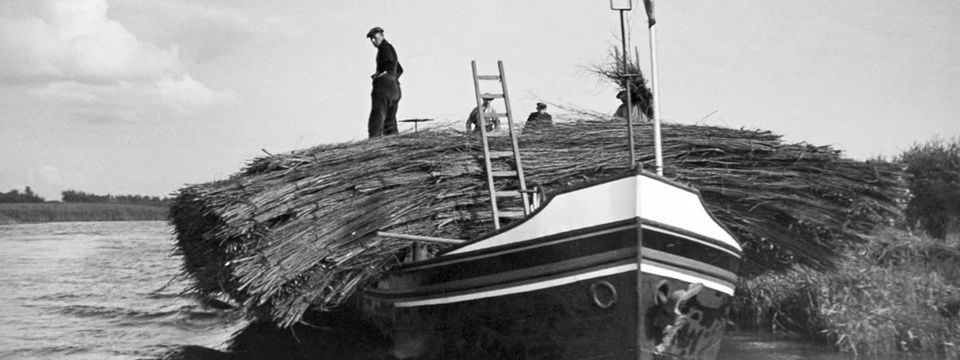Origin of the Biesbosch
The ‘Saint Elizabeth Flood’ occurred in 1421. This disastrous flood led to the disappearance of 17 villages. An inland sea stretching from northwest of Dordrecht to southeast of Geertruidenberg was created.
Immediately after the disaster, land fell dry again. The flow of water carried sand and clay, which sank to the bottom. The inland sea became shallower and shallower. Eventually, patches of land emerged from the water at ebb tide and rushes started growing on them. These plants flourish with their roots in the water. People planted extra rushes so they could harvest them. The Biesbosch derives its name from this plant; it means “a forest of rushes”. More land appeared; the roots were less frequently in water, and the rushes were unable to flourish so well. Reeds were able to withstand this condition better and supplanted the rushes, giving rise to vast reed beds. Subsequently, willows started to grow and people used the branches to make furniture and other products. Willows grow better when they get less water, so the people built dikes to prevent the willows being inundated at flood tide. A piece of land with planted willows is called a griend.
Griend workers
The workers who cut willow wood were known as griend workers. Some of these workers started already working in the grienden since the age of 12. It took the men a journey of two to three hours to reach a griend. They lived in the griend workers’ huts from Monday to Saturday. The huts were small and damp, and the men slept on beds of straw. You can still find and visit authentic griend huts of this kind in the Biesbosch.
